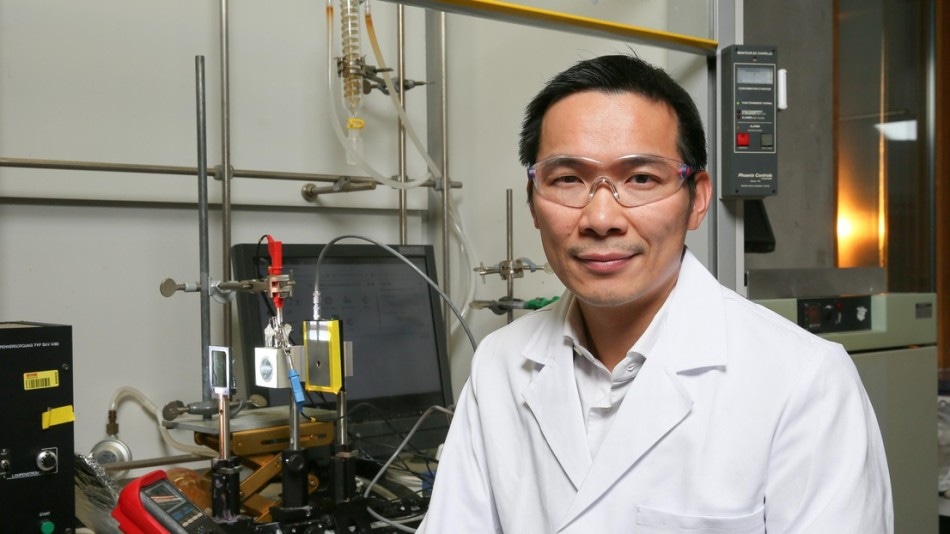Jun 14 2019
EPFL chemists have created an efficient process for transforming carbon dioxide into carbon monoxide, the main component of synthetic fuels and materials.
 Image credit: EPFL
Image credit: EPFL
The carbon dioxide (CO2) generated upon burning fossil fuels is usually liberated into the atmosphere. Scientists working on synthetic fuels—also called carbon-neutral fuels—are investigating ways to collect and recycle that CO2. At EPFL, this work is led by a group under Professor Xile Hu at the Laboratory of Inorganic Synthesis and Catalysis (LSCI).
The chemists have recently achieved a milestone by successfully producing a high-efficiency catalyst that turns dissolved CO2 into carbon monoxide (CO)—a vital component of all synthetic fuels, plastics, and other materials. The scientists have reported the study outcomes in Science on June 14th, 2019.
Replacing Gold with Iron
The new process is equally efficient as former technologies, but with one chief advantage.
To date, most catalysts have used atoms of precious metals such as gold. But we’ve used iron atoms instead. At extremely low currents, our process achieves conversion rates of around 90%, meaning it performs on a par with precious-metal catalysts.
Professor Xile Hu, Laboratory of Inorganic Synthesis and Catalysis, EPFL
Our catalyst converts such a high percentage of CO2 into CO because we successfully stabilized iron atoms to achieve efficient CO2 activation.
Jun Gu, PhD Student and Study Lead Author, EPFL
To help them realize why their catalyst was so highly active, the scientists invited a research group headed by Professor Hao Ming Chen at National Taiwan University, who carried out a key measurement of the catalyst under operating conditions with the help of synchrotron X-rays.
Closing the Carbon Cycle
While the group’s work is still experimental to a greater extent, the study opens the door for new applications. Currently, most of the CO required to produce synthetic materials is derived from petroleum. By recycling the carbon dioxide generated due to the burning of fossil fuels, precious resources could be preserved, and also the amount of CO2—a major greenhouse gas—released into the atmosphere could be reduced.
Furthermore, the process could be integrated with hydrogen-production technologies and storage batteries to transform excess renewable power into products that could bridge the gap when demand exceeds supply.
Funding
This research was supported by Gaznat SA, the European Research Council (grant No. 681292), and the Ministry of Science and Technology, Taiwan (contract No. MOST 107-2628-M-002-015-RSP).
Carbon-neutral fuels move a step closer
Video credit: EPFL